You are viewing an older revision! See the latest version
Active Aerodynamics and DRS
Project Overview¶
The aim of our project is to create a scaled down, but fully functional, active aerodynamics package and Drag Reduction System (or DRS) for a Formula 1 style racecar, providing adjustable downforce control depending on where the car is on track.
This is achieved through raising or lowering four flaps, one at each corner of the vehicle, each controlled independently by a servo motor.
Project Background¶
Active Aerodynamics¶
The aerodynamics of a car controls the airflow over the vehicle, with design tradeoffs being made between producing downforce to counteract undesirable lift forces and maintaining maximum possible speed.
Active aerodynamics allows the airflow over the car to be modified in real-time, maintaining maximum efficiency no matter what conditions the car is under. This commonly takes the form of front and rear wings (also known as spoilers) whose angle is altered depending on whether the driver wants maximum speed on a straight (requiring mimimal downforce) or is cornering at a high speed (requiring high levels of downforce).
More on active aerodynamics can be found at this website:
http://www.bbc.com/autos/story/20140819-carmakers-slippery-new-buzzword
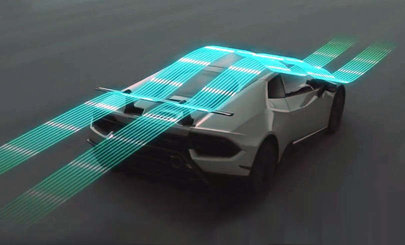
Drag Reduction System (DRS)¶
The Drag Reduction System is a type of active aerodynamics specific to Formula 1 racing. Specifically, this is the movement of the rear wing to create a short burst of reduced drag, allowing the driver to overtake other vehicles.
There are very strict rules covering the use of DRS, which is only allowed to be used on designated sections of the track, and if the driver is within one second of the car in front.
More on active aerodynamics can be found at this website:
https://www.racecar-engineering.com/articles/f1/drs-the-drag-reduction-system/
| BEFORE | AFTER |
|---|---|
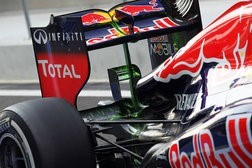 | 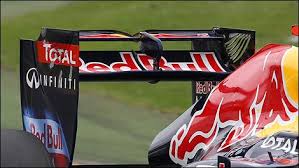 |
Project Aims¶
Through this project, we aim to apply the above techniques to an RC car with four servo-controlled flaps as a simulation of an aerodynamic package.
Active aerodynamics will maximise the downforce when cornering - lowering the flaps to the inside of the turn and raising the outside flaps, and DRS will be used to minimize downforce on straight sections of the track, allowing maximum efficiency, and therefore maximum speed. This is achieved by lowering all four flaps and thus minimizing drag. If enabled, the DRS is activated automatically once the car passes a certain speed.
Bluetooth will be used to remotely turn on and off Active Aerodynamics, DRS and a testing mode which cycles all flaps through their range of motion. The mbed will also send out regular and continuous status updates from the car, indicating the current mode.
Hardware¶
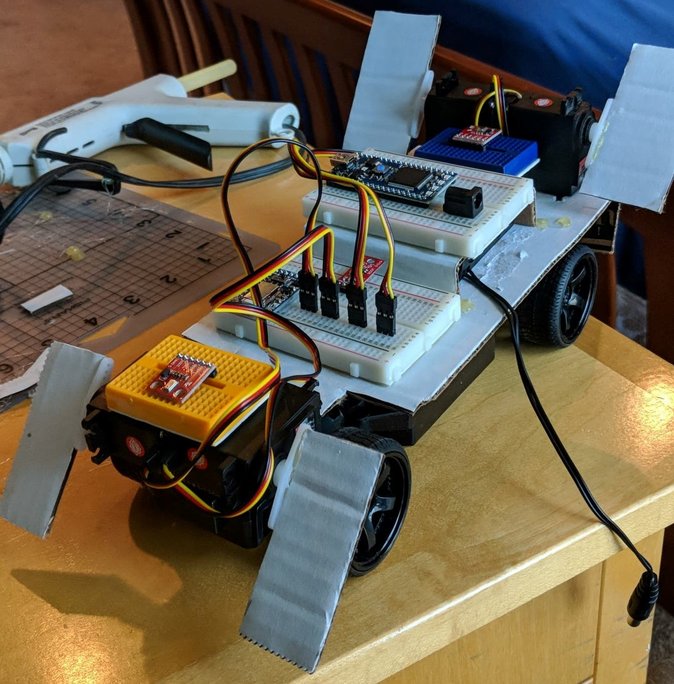
Parts List¶
- MBed
- RC Car
- 4x Servos
- Corrugated cardboard flaps
- IMU
- Bluetooth Module
Wiring Diagram¶
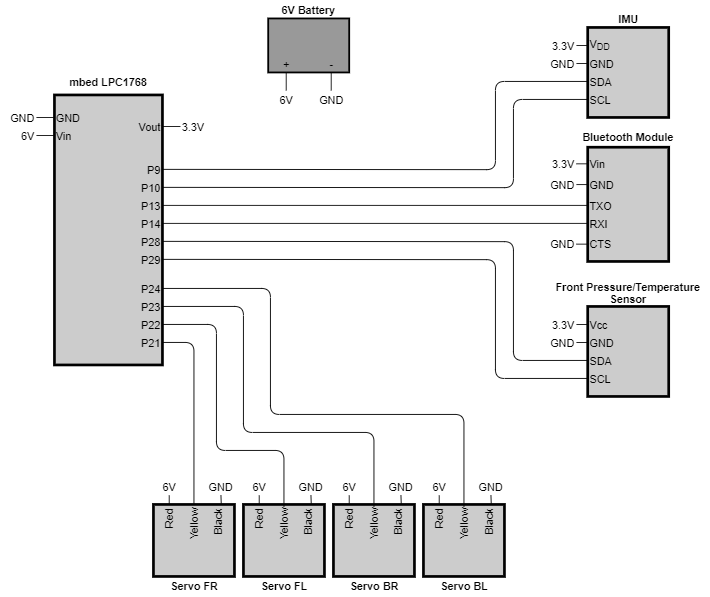
Pinout¶
| mbed | IMU | Bluetooth Module | Pressure/Temperature Sensor | Servo FR | Servo FL | Servo BR | Servo FL | 6V Battery |
|---|---|---|---|---|---|---|---|---|
| GND | GND | GND | GND, CTS | Black | Black | Black | Black | - |
| Vin | Red | Red | Red | Red | + | |||
| Vout | VDD | Vin | VCC | |||||
| P9 | SDA | |||||||
| P10 | SCL | |||||||
| P13 | TXO | |||||||
| P14 | RXI | |||||||
| P21 | Yellow | |||||||
| P22 | Yellow | |||||||
| P23 | Yellow | |||||||
| P24 | Yellow | |||||||
| P28 | SDA | |||||||
| P29 | SCL |
Software¶
Libraries Used¶
- mbed
- rtos
- servo
- LSM9DS1
Code¶
Import programActiveAeroAndDRS
Source code for Active Aerodynamics and Drag Reduction System
Video Demonstration¶
Further Work¶
- Scale up to implement the system on a full-size vehicle - small servos would be replaced by more powerful ones and the corrugated cardboard flaps being replaced with a lightweight composite aero package
- Integrate mbed into a CAN bus network
- Include automatic DRS is deactivation - required by Formula 1 for safety reasons
- Increase data aquisition levels by adding temperature and pressure sensors placed at critical points across the car
- Expand Bluetooth data transfer to include full telemetry data from pressure, temperature and IMU values - could be plotted in real time throughout race
